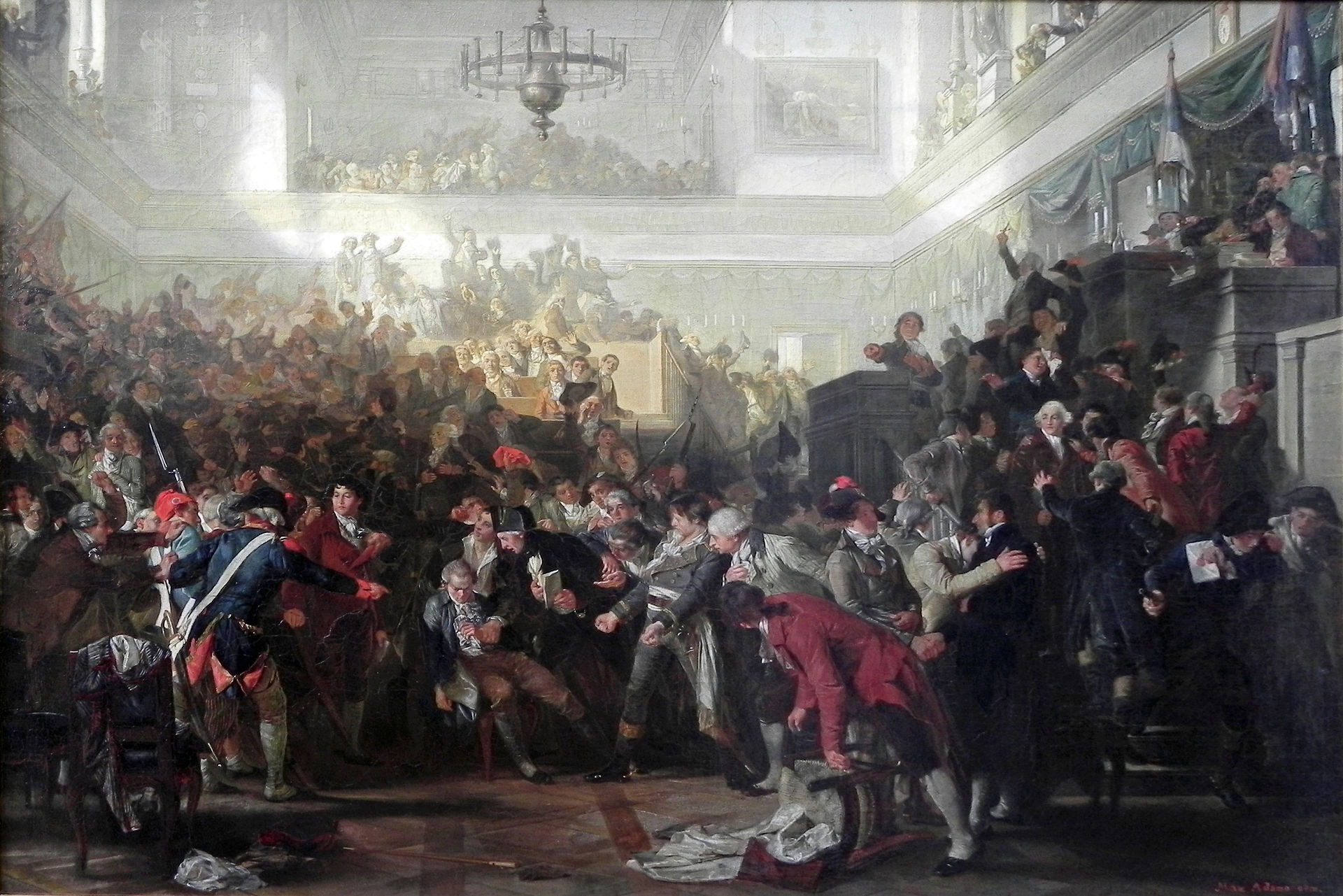Democracy and despotism in a digital age.
Make Mine Thermidor

What woke lobster can escape their revolution’s boiling pot?
For the counter-revolutionary, there is a grim satisfaction in the Thermidorian Reaction. Weeks after celebrating his fabricated Cult of the Supreme Being, after thousands of summary executions, French revolutionary Maximilien Robespierre and his radicals are themselves guillotined in the sultry revolutionary month of Thermidor (late July 1794), in the very place where they had decapitated so many others, including the King and Queen of France, and even many of Robespierre’s fellow revolutionaries. Among those losing their heads with Robespierre was his partner in crime, Louis de Saint Just, “the Angel of Death,” who once admonished the Committee on Public Safety that “a nation only regenerates itself upon heaps of corpses.” History rarely seems so neat.
Almost a century after the fall of Robespierre and the first Thermidor, Victorien Sardou’s 1891 play Thermidor, featuring a villainous Robespierre would provoke a primitive Parisian precursor to our own Cancel Culture of today. Protests, death threats, cancellations and calls for accountability on who exactly had allowed such a work to be performed on a state-funded stage rained down on all concerned. This theatrical controversy would lead to a spirited defense of the French Revolution, all of it, by radical politician Georges Clemenceau. You can’t have the Rights of Man without Robespierre and the Terror. It is this play which led to the creation of the eponymous dish of lobster, cream, and mustard that we enjoy today.
The term Thermidorian Reaction usually denotes a “conservative” or centrist reaction from within to movements or revolutions which have gone too far in one direction, a course correction, often accompanied by the same intolerance and violence that the original movement generated. In France, the 9th of Thermidor did not restore the old regime, nor did it put the Bourbons back on the throne. It would lead in a few years not to an old-style king but to an emperor, with ambitions far beyond anything held by Louis XIV.
Other movements and revolutions have had their course corrections. In Russia, Trotsky called Stalin a Red Thermidorian. But Stalin’s terror of the 1930s was a variation on a theme first composed by Lenin (and Trotsky) during the previous decade. In Cuba, the Castro regime purged the old-time Partido Socialista Popular (PSP) communists in 1968, sending them all to prison; some later died in exile in Miami, along with the very “counter-revolutionaries” they had once excoriated. In Syria, the “Corrective Movement” of November 13, 1970 marked the transformation from a chaotic far-left regime led by Salah Jadid to a family-run dictatorship of the Assad family (now approaching its 50th anniversary). I was in Syria when Jadid died in prison in 1993. When he was buried in the Alawite Mountains some brave souls shouted “Jadid is a Friend of God and Assad is the enemy of God!”
Our Turn
Now, obviously, it is not 1794 in America and the West. The United States is not Russia, Cuba, Syria or France during the Terror. The tumult of the past few weeks has led to raised voices, activism, marches, considerable physical destruction and anger but precious few deaths and injuries. The revolutionary moment in the West today often seems one part righteous anger to two parts revolutionary pantomime. But amidst the real mobilization about injustice and the often-puerile posturing, a threshold does seem to have been passed. One recalls R.R. Palmer’s observation on 1794 France that “in its vivid sense of a new world coming, its ‘eschatology,’ the Revolution became a kind of religion.” The current purge is driven by a very modern combination of historic grievances, activism, progressive ideology and woke corporatism turbo-charged by the modern political accelerant which is social media, undergirded by some of the richest and most powerful corporations on the planet. Gramsci and Rudi Dutschke would be very proud.
Such a formidable revolutionary moment will, almost certainly, generate a backlash of some sort, whether a course correction or something greater. A tipping point may be reached or has already been reached. Robespierre overreached when, in a vague but threatening speech, he seemed to target his own colleagues with the National Razor. Today’s revolutionary manqués will be seen as overreaching by their own comrades when the price of being cancelled, of losing your job, or being ostracized or getting beat up is seen as too costly or too embarrassing by the right sort of people.
Regardless of that reaction from within, other, broader forms of a counter-narrative may sprout up. Many peaceable souls will prefer the false comfort of silence or indifference but the specter of Revolution, even one as farcical as what we have seen to date, will conjure its adversarial counterpart. Just like the French revolutionary march La Carmagnole spawned counter-revolutionary copies, so will the symbolism and targets of today spawn transgressive symbols of resistance. Robert E. Lee and the Confederate battle flag may be a bridge too far, but Columbus could well be replaced by King Felipe II of Spain, and continued targeting of George Washington will turn him into something he has not been for more than two centuries: a subversive symbol able to stir men’s hearts to his defense.
And thinking of transgression and subversion, of Revolution and Counter-Revolution, there is one more lesson we can learn from Thermidor. Only nine men, fellow revolutionaries fearing for their lives, initially moved to bring down Robespierre. His threats of bring down the “impure” immoral traitors had mobilized them. The subsequent confusion, arrests and movements, and marshaling of militias could have easily led to Robespierre’s triumph rather than his downfall. Like Waterloo, Thermidor was a “close-run thing.” What seems in retrospect like great mass historical shifts can be carried out by small groups of individuals either swaying and manipulating the mob or standing against it.
The American Mind presents a range of perspectives. Views are writers’ own and do not necessarily represent those of The Claremont Institute.
The American Mind is a publication of the Claremont Institute, a non-profit 501(c)(3) organization, dedicated to restoring the principles of the American Founding to their rightful, preeminent authority in our national life. Interested in supporting our work? Gifts to the Claremont Institute are tax-deductible.
Part I: Unfettered reason cannot conserve anything.
One dose will erase your whole political mind.






